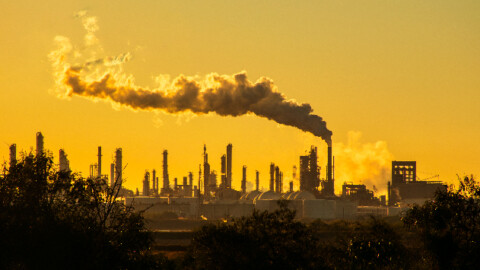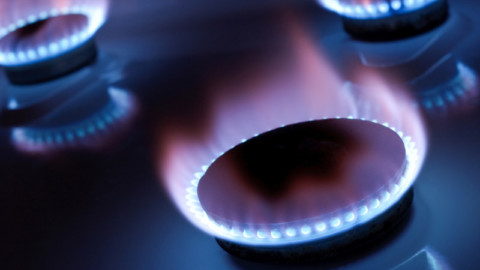In the lead up to the 2022 Australian Domestic Gas Outlook conference, some of the speakers were asked to address the issue of net zero. The United Nations Climate Change Conference (COP26) in November 2021 drew more attention to emissions from fossil fuels, but the rise of ESG is part of a general recognition that climate change fundamentally impacts energy use and production.
At the same time, gas remains a vital part of most countries’ energy mix, providing a lower emissions alternative to coal. So, what is the future for Australia’s gas sector and how should it respond to net zero?
Defining net zero for the gas industry
Bruce Robertson from the Institute for Energy Economics & Financial Analysis (IEEFA) gives this sobering definition of what net zero means for the gas industry: “A true net zero by 2050 commitment would be a seismic shift for the gas industry. No new projects, no new gas infrastructure, reduced exploration; gas in Australia would be a sunset industry.”
Bruce noted that in the Australian context, ‘net zero’ appears to mean, “more gas fields, more LNG facilities, more pipelines, and way more subsidies and more production”.
Maintaining standards of living and energy security
Other contributors are much more positive about gas and its future.
David Maxwell from Cooper Energy positions gas as essential to societies around the world striving towards maintaining and expanding affordable, secure energy supplies to meet growing consumer demand. David Berman from ExxonMobil Australia agreed, saying, “Natural gas will continue to play an essential role in maintaining the energy security Australians are used to, even in a net zero future”.
Ian Davies of Senex Energy noted that natural gas will continue to be integral in meeting demand for reliable and affordable energy from industry, manufacturing, business, and homes as Australia moves to a low-carbon future.
Andrew McConville, CEO of the Australian Petroleum Production and Exploration Association (APPEA), emphasised the impact the gas sector has on the Australian economy.
“In 2021 alone our members signed 19 new gas supply agreements with domestic customers and announced more than $27 billion of investment in new projects to continue providing reliable and secure energy for Australia,” Mr McConville said.
Gas as a low emissions energy source
Quite a few people defended gas as lower emissions than other energy sources.
Mr Davies said natural gas is already helping industry and manufacturing reduce greenhouse gas emissions and a key challenge is to help these customers accelerate their decarbonisation journey. Mr McConville agreed with this sentiment noting, “As a cleaner energy source, natural gas is pivotal to securing Australia’s net zero emissions future.”
Mr McConville said that natural gas, which emits around half the emissions of coal, is playing an increasingly important role as a bulk energy source.
Kristin Raman from Australian Gas Infrastructure Group (AGIG) said that, whilst net zero is the future of Australia’s domestic gas sector, the efficient use of existing infrastructure, and the resources we have today, will deliver stable energy systems and lowest cost decarbonisation to customers.
Gas supporting the transition to intermittent renewable energies
Nearly everyone sees gas as vital in the energy transition, providing backup to support for irregular renewable supply. Mr McConville said gas provides stable back-up power for intermittent renewable energies. Mr Maxwell called natural gas “the perfect partner to intermittent renewable energy to deliver ‘on-call’ electricity generation”.
Mr Berman is confident that gas as a back-up power supply is essential in the transition to intermittent renewable energy sources, such as wind and solar. He said, “Ongoing investment in maintaining natural gas supplies will be required to ensure Australians can continue to access the reliable supply of energy we are all used to.”
Shelley Robertson from Mineral Resources (MRL) noted that gas will continue to play a key role providing a reliable and instantaneous baseload fuel, on hand even when energy sources such as solar and wind are unavailable. Ms Robertson gave a word of caution that once large-scale energy storage improves in both cost and capacity, gas will not be as important.
Outlook for gas in a net zero future
Ms Robertson said alternative fuels, including natural gas, are critical to the Australian economy and gas market for decades to come – particularly as Australia transitions towards net zero emissions.
The gas sector sees hydrogen and alternative fuels as part of their future. Ms Raman said that renewable gases such as hydrogen and biomethane are key to achieving Australia’s net zero targets. Mr Maxwell noted that natural gas can provide a fuel source for hydrogen.
Mr Davies said that sustained and co-operative action will be required across the natural gas value chain and the entire sector to achieve decarbonisation.
Meeting the challenges of net zero is an ongoing issue for the gas industry. Exactly how it is going to play out unclear. But the sector is full of people who see themselves as part of the solution rather than the problem.
Each year, the Australian Domestic Gas Outlook (ADGO) conference brings together the who’s who of the industry, for high-level discussions that will set out the future direction of the industry, to debate policy imperatives and discuss how commercial opportunities can be seized.
With over 300 attendees and an unmatched speaker line-up, ADGO is the premium event to stay on top of developments and rub shoulders with figures shaping the future of domestic gas.
If you’d like to get a full snapshot of the content being covered at ADGO 2022, view the agenda here.

















